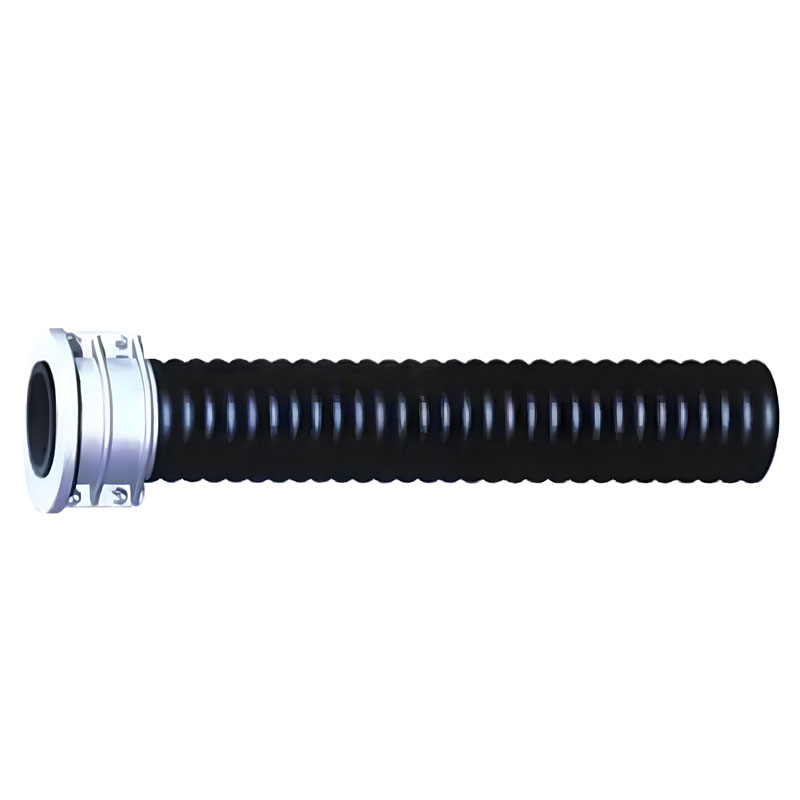The Essential Guide to Suction and Discharge Rubber Hoses
2024-08-28
In the realm of industrial operations, construction, and fluid handling, Suction and Discharge Rubber Hoses play a vital role. These hoses are designed to transfer various liquids, including water, oil, chemicals, and more, in a safe, efficient, and reliable manner. Understanding the types, applications, and benefits of suction and discharge rubber hoses is crucial for anyone involved in industries where fluid transfer is a key operation.
What are Suction and Discharge Rubber Hoses?
Suction and Discharge Rubber Hoses are flexible, durable tubes made primarily from rubber materials, designed to handle the intake (suction) and expulsion (discharge) of liquids. These hoses are reinforced with materials like synthetic fabric, wire, or other strong fibers to enhance their strength, flexibility, and resistance to various environmental factors.
- Suction Hose: Specifically designed to draw fluid from a source, suction hoses are reinforced to withstand negative pressure (vacuum) and prevent collapsing during the suction process. These hoses are often used in pumps and are capable of handling a wide range of liquids.
- Discharge Hose: Unlike suction hoses, discharge hoses are designed to handle the expulsion of fluids from pumps or other equipment. These hoses are also reinforced, but they are optimized for pushing liquid out, rather than drawing it in.
Key Features of Suction and Discharge Rubber Hoses
1. Durability: Made from high-quality rubber, these hoses are built to withstand harsh conditions, including exposure to chemicals, abrasion, and varying temperatures. The durability of these hoses ensures a long service life, even in demanding industrial environments.
2. Flexibility: Suction and discharge rubber hoses are designed to be flexible, allowing them to bend around obstacles and fit into tight spaces without kinking. This flexibility is crucial for operations where the hose needs to navigate through complex setups.
3. Reinforcement: These hoses are typically reinforced with materials such as textile plies, steel wire helixes, or synthetic yarns. This reinforcement provides the necessary strength to handle high pressures, vacuum conditions, and prevent the hose from bursting or collapsing.
4. Resistance to Environmental Factors: Suction and discharge rubber hoses are often resistant to a variety of environmental factors, including UV rays, ozone, oil, and chemicals. This resistance makes them suitable for outdoor use and in environments where exposure to such elements is inevitable.
5. Wide Range of Sizes: These hoses come in a variety of sizes, from small diameters for light-duty applications to large diameters for heavy-duty industrial operations. The range of sizes allows for the selection of the right hose for specific needs.
Applications of Suction and Discharge Rubber Hoses
1. Construction: In construction, these hoses are used for dewatering, transferring slurry, or moving other construction materials. Their durability and flexibility make them ideal for use in challenging job site conditions.
2. Agriculture: Farmers use suction and discharge hoses for irrigation, transferring water, and handling fertilizers or pesticides. The hoses’ resistance to chemicals and durability are particularly beneficial in agricultural settings.
3. Oil and Gas Industry: In the oil and gas sector, suction and discharge hoses are used to transport petroleum products, chemicals, and other hazardous liquids. Their resistance to oil and reinforced construction make them a reliable choice for this industry.
4. Mining: Mining operations require robust hoses for transferring slurry, water, and chemicals. The harsh conditions of mining make the durability and flexibility of these hoses essential.
5. Marine Applications: In marine environments, suction and discharge hoses are used for dewatering boats, transferring fuel, and handling bilge water. Their resistance to saltwater and flexibility are key features in these applications.
6. Industrial Applications: Factories and processing plants use these hoses to move chemicals, wastewater, and other industrial fluids. Their ability to withstand high pressures and resist chemical damage is crucial in such environments.
Benefits of Using Suction and Discharge Rubber Hoses
1. Versatility: One of the primary benefits of suction and discharge rubber hoses is their versatility. They can handle a wide variety of liquids, from water to hazardous chemicals, making them suitable for numerous industries.
2. Efficiency: These hoses allow for efficient transfer of fluids, reducing the time and effort required in operations like dewatering, irrigation, or chemical processing. Their design ensures that fluids move quickly and safely through the hose, minimizing loss and spillage.
3. Safety: The reinforced construction of suction and discharge hoses reduces the risk of hose failure, which can lead to dangerous spills or accidents. By using high-quality hoses, businesses can enhance the safety of their operations.
4. Cost-Effectiveness: Due to their durability and long service life, suction and discharge rubber hoses offer a cost-effective solution for fluid transfer needs. They require less frequent replacement compared to less durable hoses, reducing overall maintenance costs.
5. Adaptability: The availability of different sizes, pressure ratings, and material compositions means that there is a suction and discharge hose for almost any application. This adaptability makes it easier for businesses to find the right hose for their specific needs.
Maintenance Tips for Suction and Discharge Rubber Hoses
To ensure the longevity and optimal performance of suction and discharge rubber hoses, proper maintenance is crucial:
1. Regular Inspections: Periodically check hoses for signs of wear, such as cracks, bulges, or leaks. Early detection of issues can prevent catastrophic failures.
2. Proper Storage: Store hoses in a cool, dry place away from direct sunlight, chemicals, and extreme temperatures. Coiling the hoses properly and avoiding sharp bends can prevent damage during storage.
3. Clean After Use: After using the hoses, especially with harsh chemicals or abrasive materials, clean them thoroughly to remove any residue that could cause damage over time.
4. Follow Manufacturer Guidelines: Always follow the manufacturer’s recommendations for pressure ratings, temperature limits, and compatible fluids to avoid overloading the hose.
Conclusion
Suction and discharge rubber hoses are indispensable tools in a wide range of industries, from agriculture and construction to oil and gas. Their durability, flexibility, and ability to handle various fluids make them essential for efficient and safe operations. Whether you're dewatering a construction site, irrigating a farm, or transferring chemicals in a factory, understanding the capabilities and benefits of these hoses will help you choose the right one for your needs.
By selecting high-quality suction and discharge rubber hoses and maintaining them properly, you can ensure reliable performance, reduce downtime, and extend the lifespan of your equipment, ultimately leading to more efficient and cost-effective operations.



